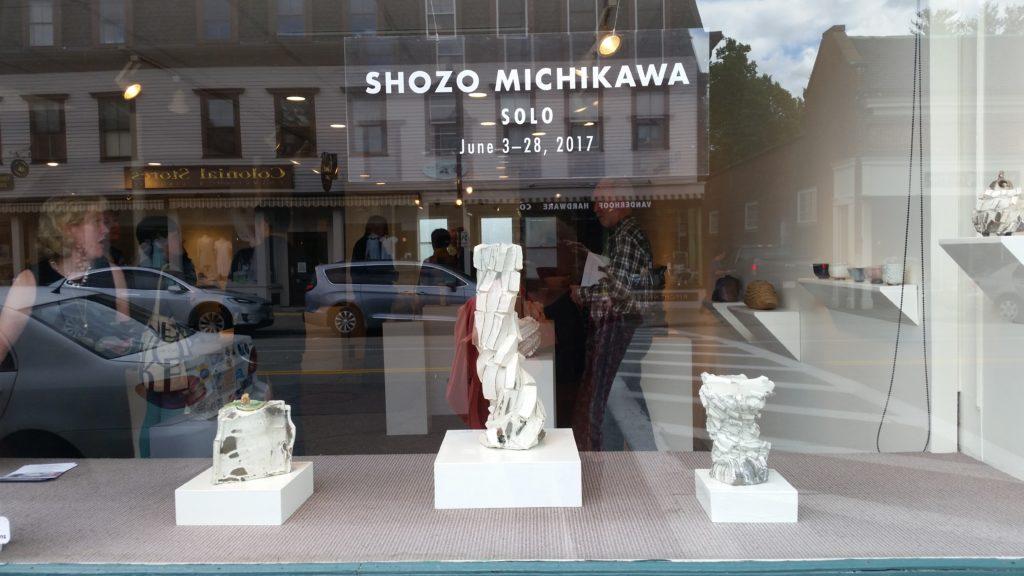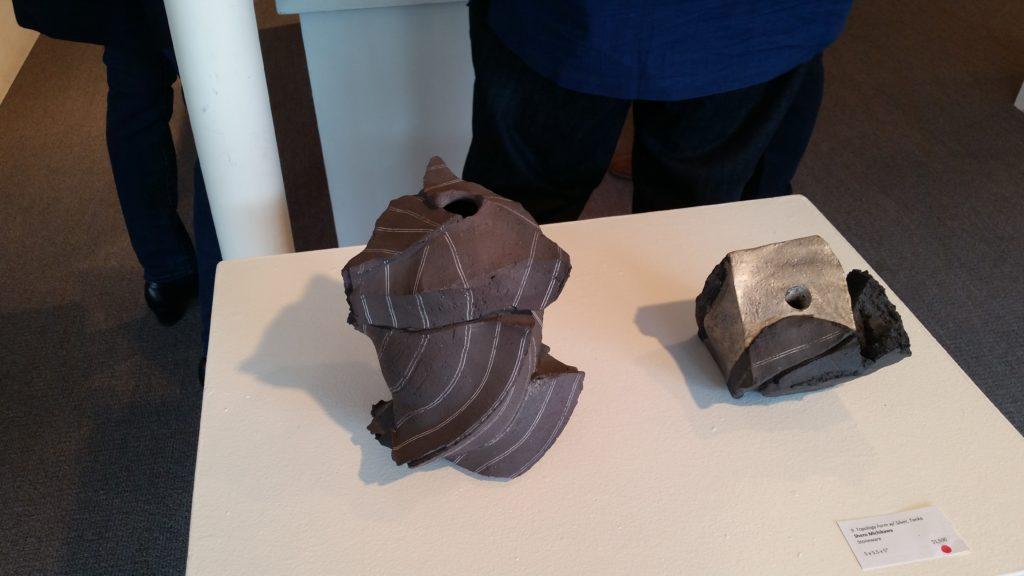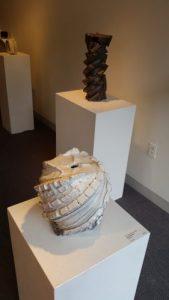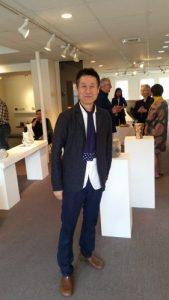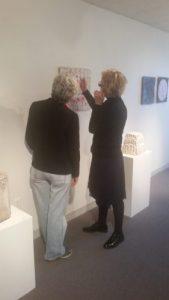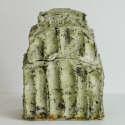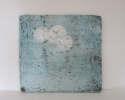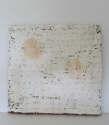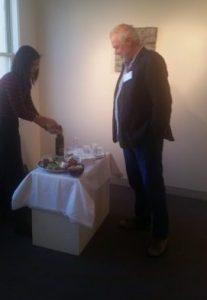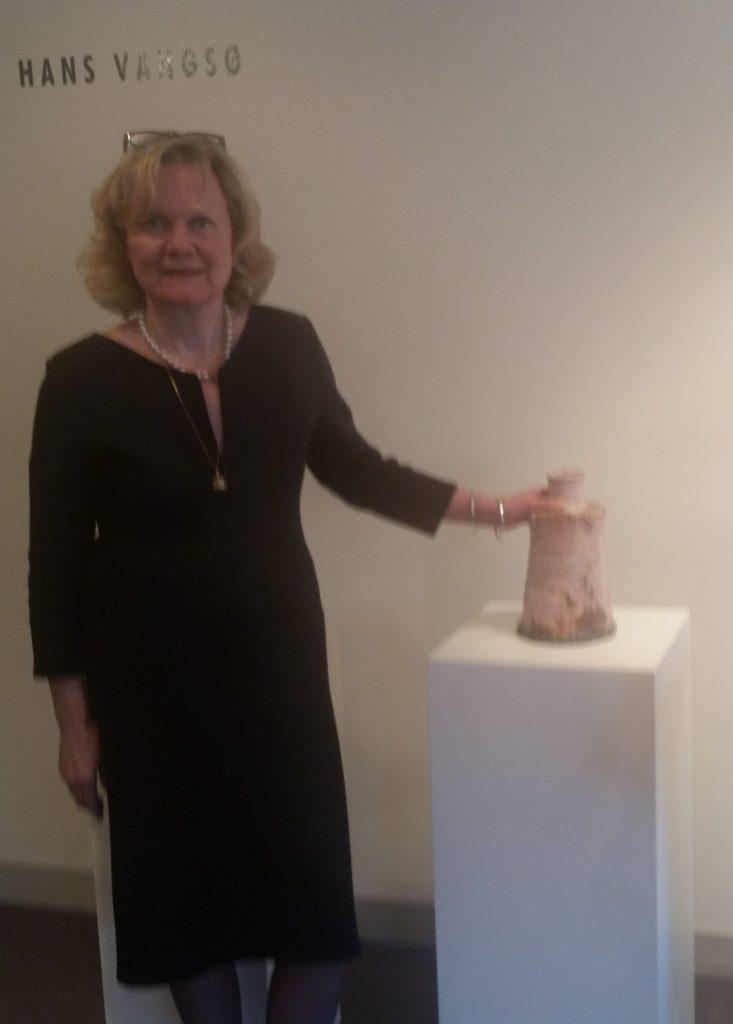“Vessel Re-Imagined” at Lacoste Keane, Concord, MA.
It’s not often that I walk through a gallery with a smile on my face, but that’s exactly what happened on Saturday, at the opening of Lacoste Keane’s “Vessel Re-imagined,” a ceramics exhibit in Concord, MA, curated by Brooks Oliver, of Dallas, Texas.

The show includes pieces by five artists, each contributing new insight to the vessel. As pointed out on the gallery website, a vessel is “a hollow container, especially one used to hold liquid, such as a bowl or cask–and a fundamental and important form connected to human civilization.” The first known clay pot, found in China, is 20,000 years old.
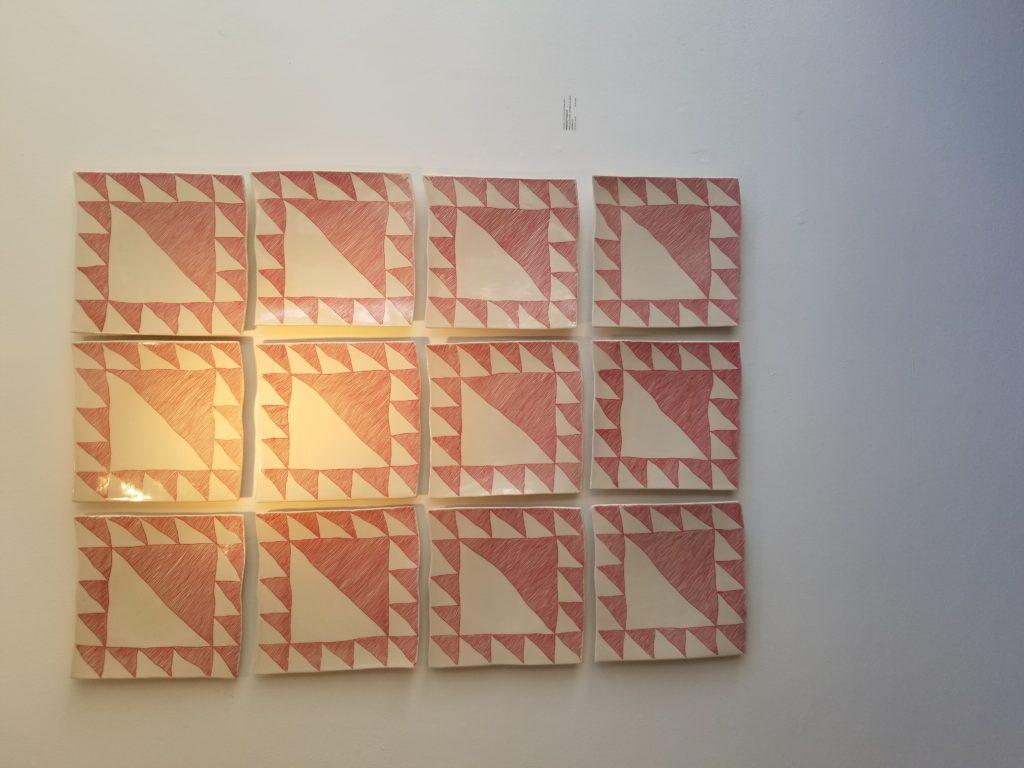
The first installation to catch my eye (immediately above) looked, from a distance, like a quilt but it was, in fact, a set of 12 plates made by Margaret Kinkeade of Kansas City– exhibiting the interplay of art and function. According to Kinkeade’s Web site, her work often focuses on American folk art and traditional craft…and on “the domestic object as souvenir, the collection as identity and community connection through shared work–especially that of women.
The idea of community connection through shared work came through clearly in Kinkeade’s second installation, (below). At the opening, attendees were encouraged to eat bread and butter off of small clay salad plates, and then hang the used plates on the wall to form a grid. The inclusion of visitors in both using and hanging the objects both exemplified and questioned the utilitarian aspect of vessels–because when hung on the wall, the plates were transformed into objects of art and decoration.
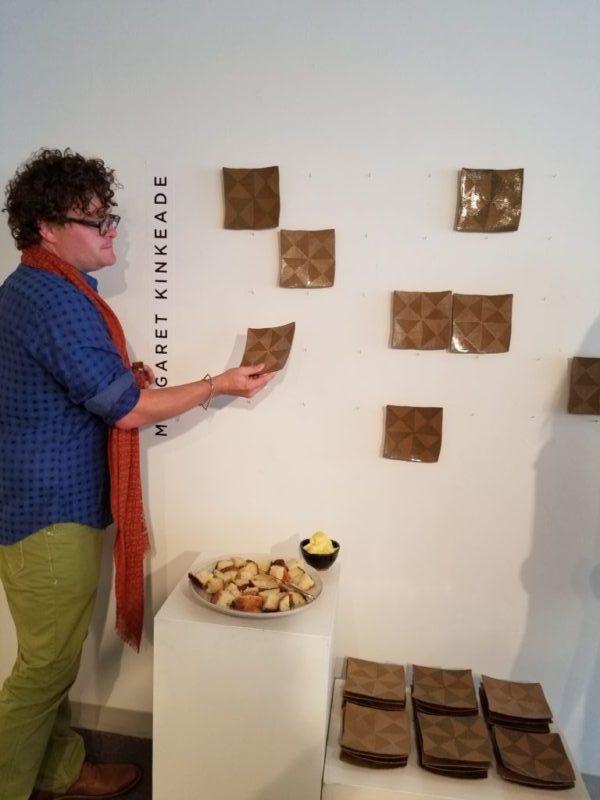
I was quite taken by the work of Lily Fein, a Massachusetts based young art graduate, who approaches the vessel through the pinching and coiling method. According to a Lacoste writeup, “her works are painstaking and time consuming to make as each vessel is coiled and pinched to form. Using the challenging medium of porcelain, she creates each vessel from the base and builds the work up by pushing the walls from inside and outside. The abstract qualities are revealed by each fingerprint and mark making. The stippling on her works is meditative as the continuous application of dots on the surface involves complete focus and involvement from the artist. Each work holds special memory of the artist and her energy.” The work below is called “Twisted Figures.”

Heesoo Lee‘s ethereal vessels (below) are inspired by nature and landscape and “combine the painterly with the sculptural. Her poetic imagery is created by using layers of underglaze and china paint on scenes built up and sculpted on clay. These works are reminiscent of Louis Comfort Tiffany and Newcomb Pottery. I found the detail amazing.

I found wonderful surprise in the work of Zak Helenske, (below) who is interested in the development of form and the exploration of pattern. He looks to industrial and architectural examples as points of reference using the language of geometry as his path of communication. According to Lacoste, “One sees in his work a connection to architecture and geometry in which the haptic—the sense of touch is important.” I especially liked his combination of architecture and “pots,” and was intrigued by how his seemingly “puzzle-like” pieces were put together.

Finally, curator Brooks Oliver, who obtained his MFA from Penn State and is a ceramics educator at the University of North Texas, endeavors to “reimagine and reinterpret the familiar functional vessel”. In doing so, according to the gallery Web site, “he challenges the viewers to examine the grey areas in art and craft, form and function and mass production versus handmade. On the surface his works are sleek and industrial, but closer examination reveals the maker’s marks such as seams that have not been sanded smoothly or glaze applied by hand. All leaving slight unevenness on the object’s surface. Oliver’s minimalist work never ceases to question the public’s perception of the vessel. One can treat them as beautiful works of art, yet the void within the object renders them functional in some instances. “



The show will be at Lacoste Keane Gallery, 25 Main St. Concord, MA, until September 28, 2019.
Photos–except for the first one, in chartreuse, c. Anita M. Harris
–Anita Harris
Anita M. Harris is a writer and communications consultant based in Cambridge, MA.
New Cambridge Observer is a publication of the Harris Communications Group, also in Cambridge.
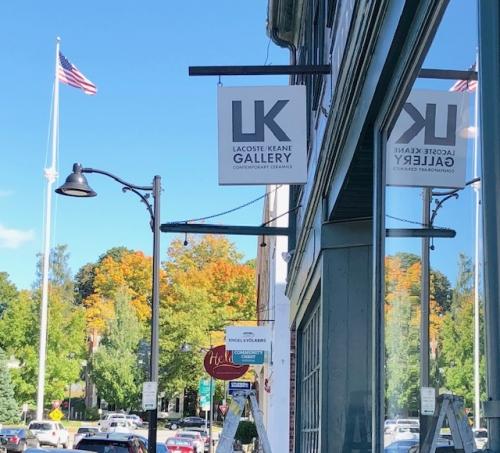
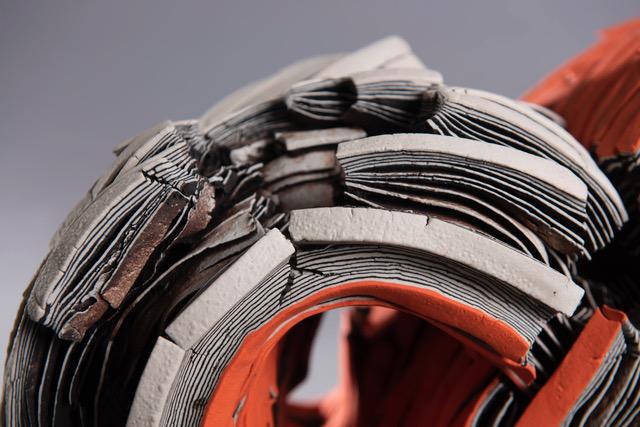
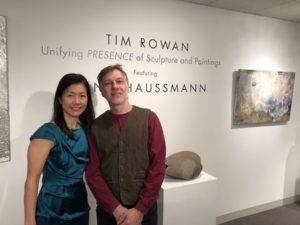
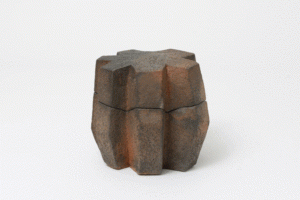
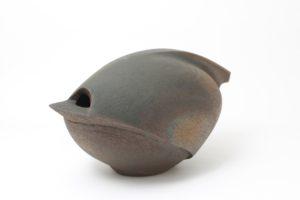
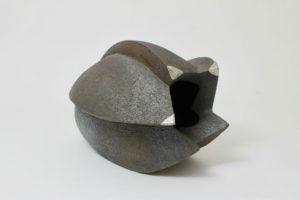
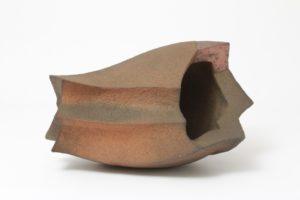
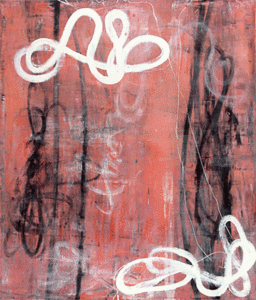
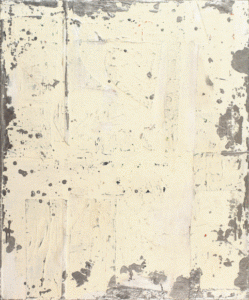
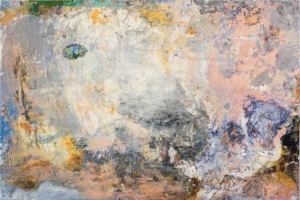
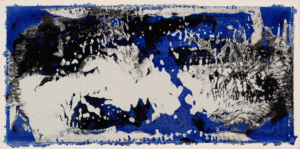
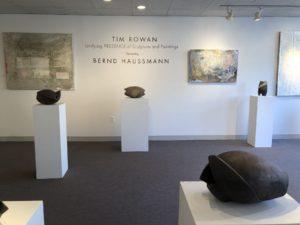

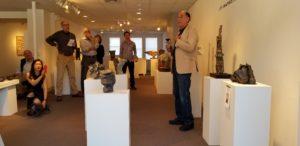
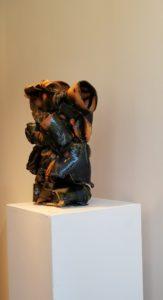
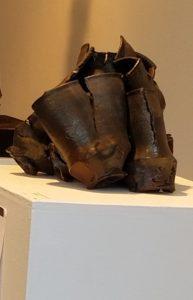
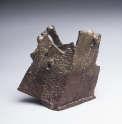
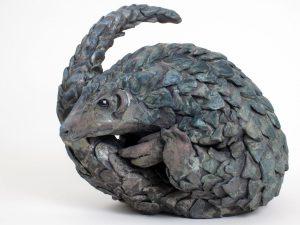

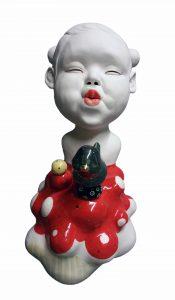
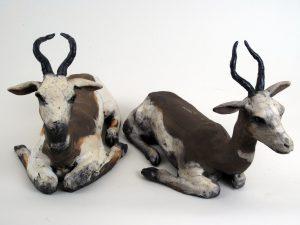

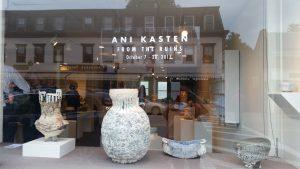
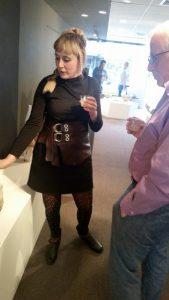
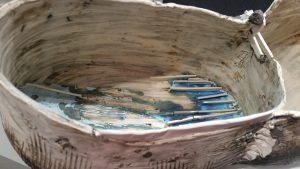
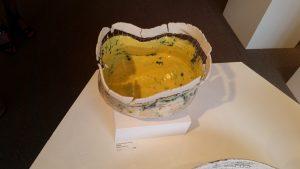
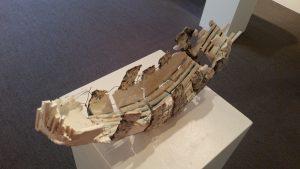 According to a gallery publication, Kasten was drawn to the medium of clay as an apprentice to British ceramist Rupert Spira, Then she headed a stoneware making facility in Nepal for four years before returning to the USA to set up ceramic studios in California, Maryland and most recently Minnesota. She has exhibited her work nationally and internationally with works in the permanent collections of the Racine Art Museum, Wisconsin; the Weisman Art Museum Minneapolis MN; and the Sana’ a Collection, the US Embassy, Sana’ a Yemen.
According to a gallery publication, Kasten was drawn to the medium of clay as an apprentice to British ceramist Rupert Spira, Then she headed a stoneware making facility in Nepal for four years before returning to the USA to set up ceramic studios in California, Maryland and most recently Minnesota. She has exhibited her work nationally and internationally with works in the permanent collections of the Racine Art Museum, Wisconsin; the Weisman Art Museum Minneapolis MN; and the Sana’ a Collection, the US Embassy, Sana’ a Yemen.
